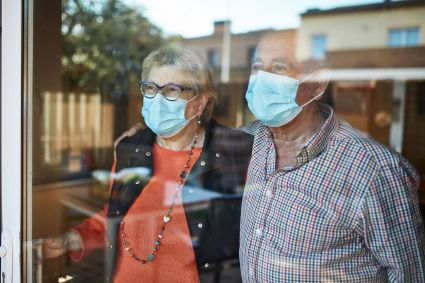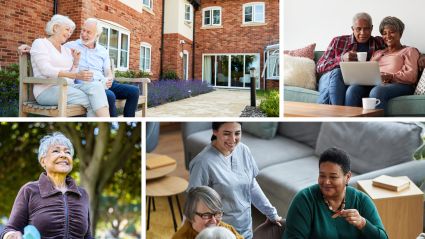The key lessons that policymakers must learn from the pandemic
This article is the ninth in a weekly joint series on “The COVID-19 Pandemic and the Future of Aging” from the Milken Institute Center for the Future of Aging and Next Avenue. The articles are Q and As with thought leaders in fields ranging from health care to retirement planning to work to intergenerational relationships.
Milken Institute Center for the Future of Aging: The pandemic has brought the shortfalls of our housing and care systems for older adults into stark relief. What lessons can we draw about the type of housing or services that can better integrate and support older adults?
Chris Herbert: One of the biggest challenges facing adults as they age and become less mobile is their increasing isolation in suburban homes and communities that offer limited opportunities for social interaction. The pandemic’s lockdown exacerbated this isolation by keeping friends and loved ones from visiting and further limiting forays for shopping, religious attendance, or socializing in the community.
A silver lining of the pandemic may be found in the tremendous boost it gave to the use of technology to socialize, bring goods into the home, and access telehealth.
But only about half of older adults own smartphones, and nearly 30 percent report no internet usage. To build on these lessons, we will need to identify ways to close the digital divide for older adults who lack access to broadband internet or easy-to-use devices to make these connections.
The pandemic has made clear that addressing that divide must be a policy and business priority.
Advances in telemedicine also need to be better baked into the health-care system through permanent changes in insurance coverage, better training and equipment for health-care providers, and support for older adults to effectively navigate the technology needed to access telemedicine.
What impacts will the COVID-19 pandemic have on the types of homes we’ll see in our neighborhoods, their features, and how these changes might help —or not help — aging in place?
The pandemic has highlighted the importance of homes in many ways. With quarantines and distancing, the value of personal spaces for living, working, studying, and exercising has only grown. It seems likely that larger homes will be in demand for the foreseeable future.
Surveys confirm that a significant majority of older adults want to remain in their homes as they age. But only 1 percent of US homes offer the five basic universal-design features that make homes accessible: no-step entry, single-floor living, extra-wide hallways and doorways, wheelchair-height electrical controls, and lever handles on doors and faucets.
Much work needs to be done to ensure that homes include the amenities that people seek and, importantly, the safety and convenience features that support them as they age.
Homes with healthy air and touchless systems will also be sought after. This type of housing will certainly support aging in place, but these homes still pose a risk of isolating those with mobility restrictions later in life.
Along these lines, the pandemic has also highlighted the benefits of living in communal housing arrangements, which offer opportunities for social engagement and connection.
Hopefully, our experience this past year will foster greater openness to these types of developments. There are also lessons to be learned from the pandemic about how best to keep these communities safe from widespread infection, so communal living is a benefit and not a risk.
How did a lack of affordable housing contribute to the risks faced by older adults during the pandemic? And how could housing policy changes help alleviate these risks?
Only one in three older adults who are eligible for subsidized housing are able to secure one of these homes. Among the options available to those unable to access this public assistance is to live with children and grandchildren to make ends meet. Indeed, the share of the population living in multigenerational households has been on the rise in recent decades.
While this trend partly reflects the growing number of Hispanic and Asian households for whom such living arrangements are more common, it also mirrors the deterioration in housing affordability over this period.
Older adults living in these multigenerational households have been exposed to the risk of transmission of the coronavirus from younger family members who are still out working, shopping, and using public transit.
It seems clear that it is more than a coincidence that Black and Latino older adults, who are much more likely than whites to live in multigenerational households, have been hardest hit by the pandemic.
This experience highlights the need for expanded housing assistance that would allow older adults to live independently and in housing with supportive services. Support by the US Department of Housing and Urban Development for this type of housing has languished for years, even as the older population has grown rapidly.
I have hope that our experiences in the pandemic will spur greater support for an expansion of these efforts.
Policymakers and industry leaders must focus on new approaches to address the need for housing for older adults that is affordable, accessible, and linked to supportive services. The pandemic presents an opportunity to elevate awareness and advocate for change.














